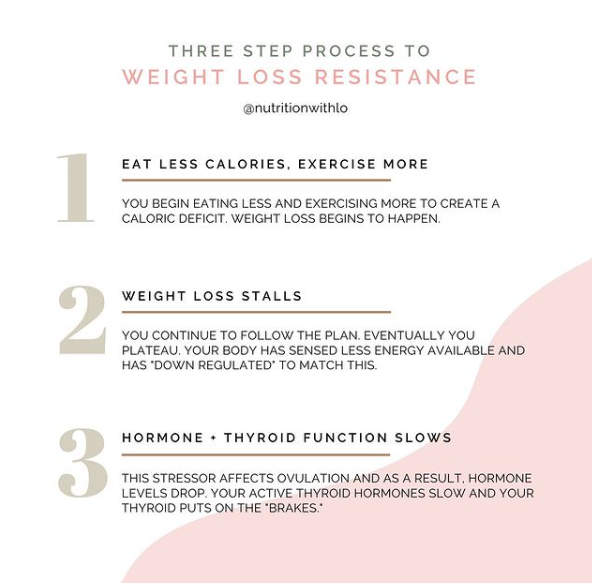
Healthy Metabolism for Weight Loss
In Part 1, we talked about the role of the hormonal symphony in your body’s ability to lose weight. If you missed this post, be sure to start there before hopping into Part 2.
Lets next talk about the role of metabolic health in sustainable weight loss. For many individuals that deal with hormonal imbalances, there is also some metabolic component present. Whether it be metabolic resistance as is present in some types of PCOS or metabolic adaptation which can occur from years of yo-yo dieting. Both metabolic situations require some intervention for weight loss to be sustainable.
Many people embark on diets with no exit plan. I would argue that the “exit plan” of a diet is probably more important than how you actually lost weight. Why? Your “exit plan” is what sets you up metabolically and hormonally for success for years to come. The common “exit plan” after a diet is to overtime resume back to normal eating patterns. However, what this does is fails to restore the natural adaptation of the metabolism that occurs when eating in a caloric deficit (dieting) for extensive periods of time. A function of our metabolism is to adapt- it is a survival mechanism. For more information on how this adaptation occurs, see my IG post here.

For example, take Sally. Sally is estimated to have a maintenance calorie need of 1,900 calories per day. However, she has been trying to lose weight on and off the last few years and has been averaging around 1,300 – 1,600 calories. She now wants to lose more weight but can’t seem to understand why eating 1,300 calories per day isn’t resulting in weight loss.
The problem could be something hormonally related. See part 1 for more information on what could be at the root here.
She also could have some metabolic adaptation from years of eating far less calories than her body demanded. Her new maintenance caloric intake requirement is likely closer to 1,300 calories per day, meaning that in order for her to lose weight she must eat less than 1,000 calories per day. This would be 1) not healthy, 2) not sustainable and 3) cause hormonal imbalances if they are already not present.
So what is the solution here? Sally needs to slowly restore her metabolic rewiring. This happens through progressive caloric increases mainly from carbohydrates and fat. If hormones have not already been addressed, these also need to be balanced throughout this process. However, it is important to note that for some, simply rewiring their metabolism is enough to also rebalance their hormones.
Although a slow process, over time, Sally will have regained her metabolic speed. She should not have gained weight during this process but should be able to maintain her previous weight, eating closer to her estimated caloric needs of 1,900 calories per day. Because her body is now being provided the calories it requires, she will also be supporting much healthier hormonal balance.
Now, if Sally wants to lose weight months or years down the road, she will be able to effectively do so while also supporting her hormones and creating a sustainable weight loss plan.
Did you know that each of our client’s that works with us for weight loss also receives Metabolic Rewiring? You can learn more about our 1:1 coaching and our Metabolic Rewiring program here.
You're all signed up! Keep your eyes on your inbox for your guide.
Comments +